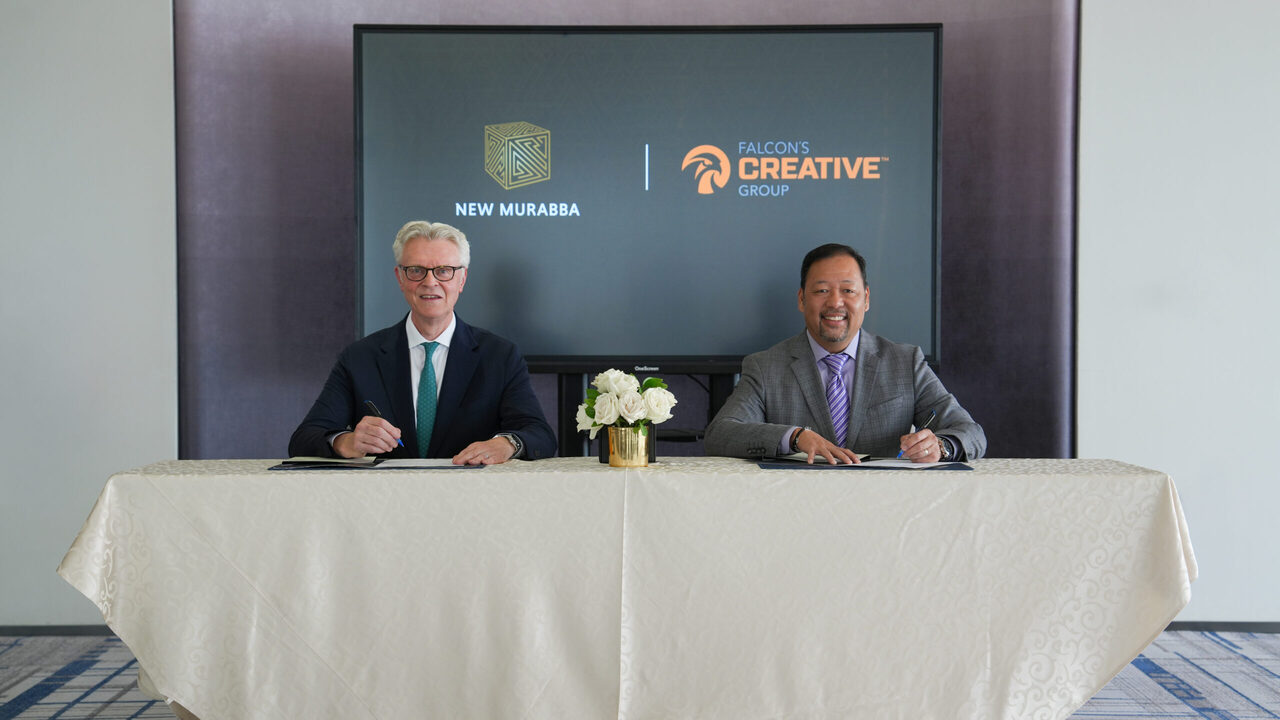New Murabba Signs Agreement with Falcon’s Creative Group

Michael Dyke (l.) and Cecil D. Magpuri signing the long-term strategic agreement about visionary concepts and immersive experiences for The Mukaab.
© Photo: New Murabba
(eap) New Murabba, a company of the Saudi Public Investment Fund (PIF), has signed a long-term strategic agreement with the US-based Falcon’s Creative Group (specialized in Entertainment Experience Design). The aim of the collaboration is to develop visionary concepts and immersive experiences for “The Mukaab”, the distinctive cube-shaped building and future “centerpiece” of the New Murabba district currently under development in Riyadh.
The partnership marks an important milestone in the mission of the state-owned company New Murabba to “deliver a world-class urban experience, fueled by technology and turbo-charged by AI.” Under the agreement, Falcon’s Creative Group will work on developing The Mukaab’s immersive attractions, cutting-edge interactive environments, and integrated technologies.
Michael Dyke, CEO of New Murabba, emphasized: “This agreement reflects the company’s commitment to partnering with global leaders in design and immersive storytelling. This strategic partnership brings the company closer to realizing the vision of creating a next-generation urban destination that transforms how people live, connect, and experience the world around them, whilst transporting them to another world, using groundbreaking technology.”
Cecil D. Magpuri, CEO of Falcon’s Creative Group, stated: “The Mukaab is architecture with a soul. We are more than just developing the story structure. We are creating an infinite storytelling ecosystem and shaping how people feel, connect, and dream within it.”
The project is part of Saudi Arabia’s “Vision 2030” and aims to create an urban model that integrates residential, commercial, and leisure offerings within a fully connected environment. The signing of the agreement followed the completion of excavation works at the site of The Mukaab, during which more than 14 million cubic meters of earth were removed – a significant milestone for the further progress of construction. ■




